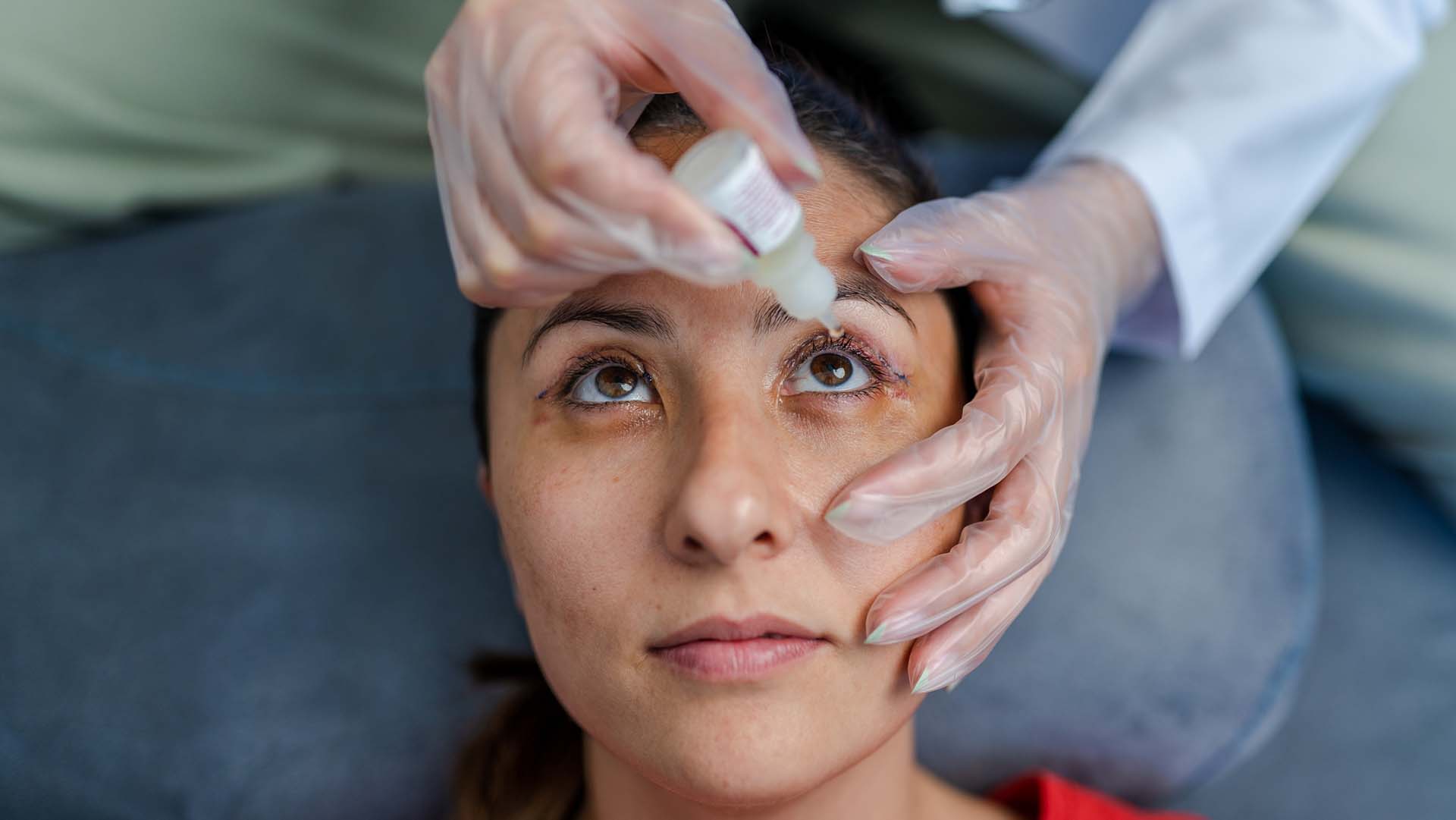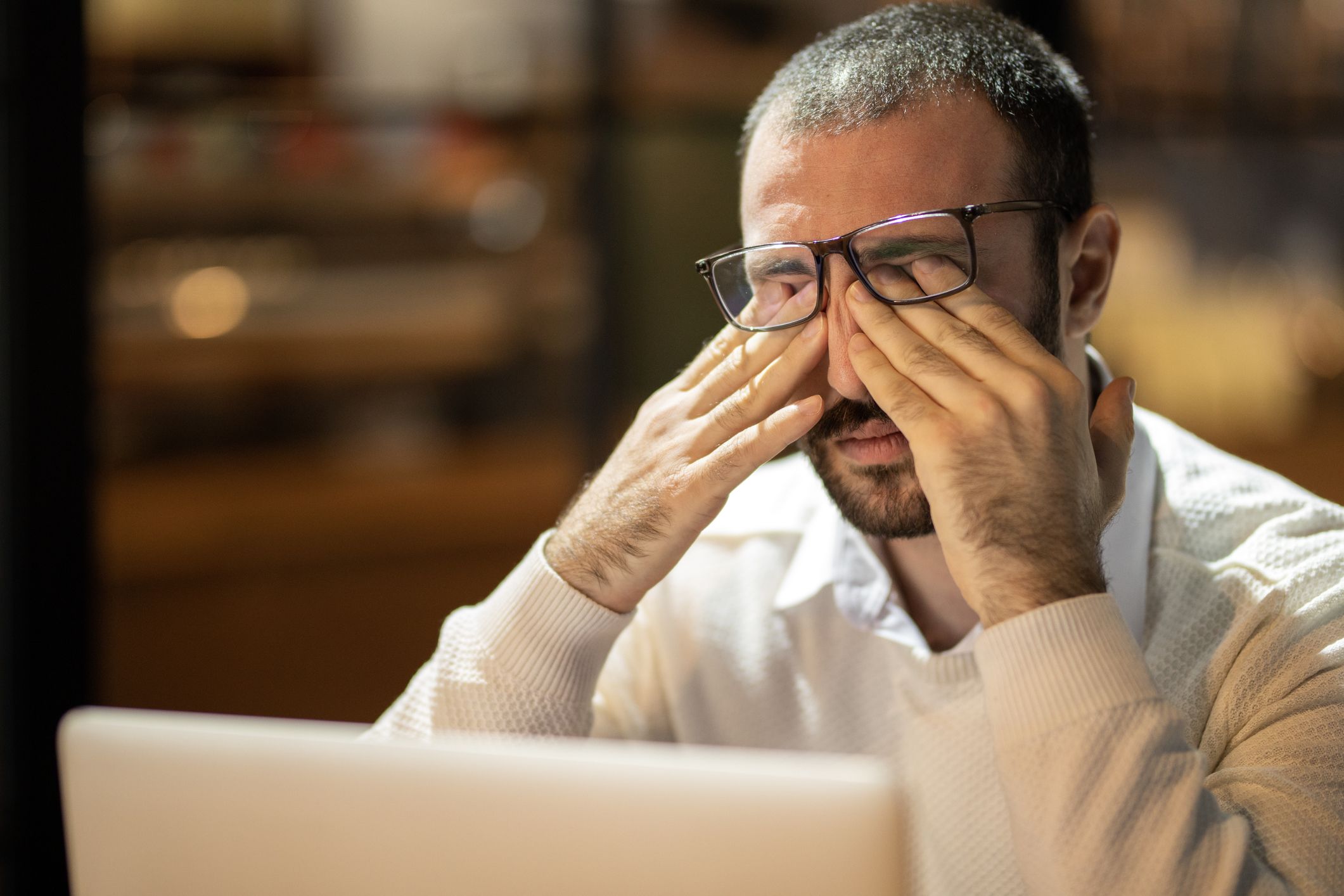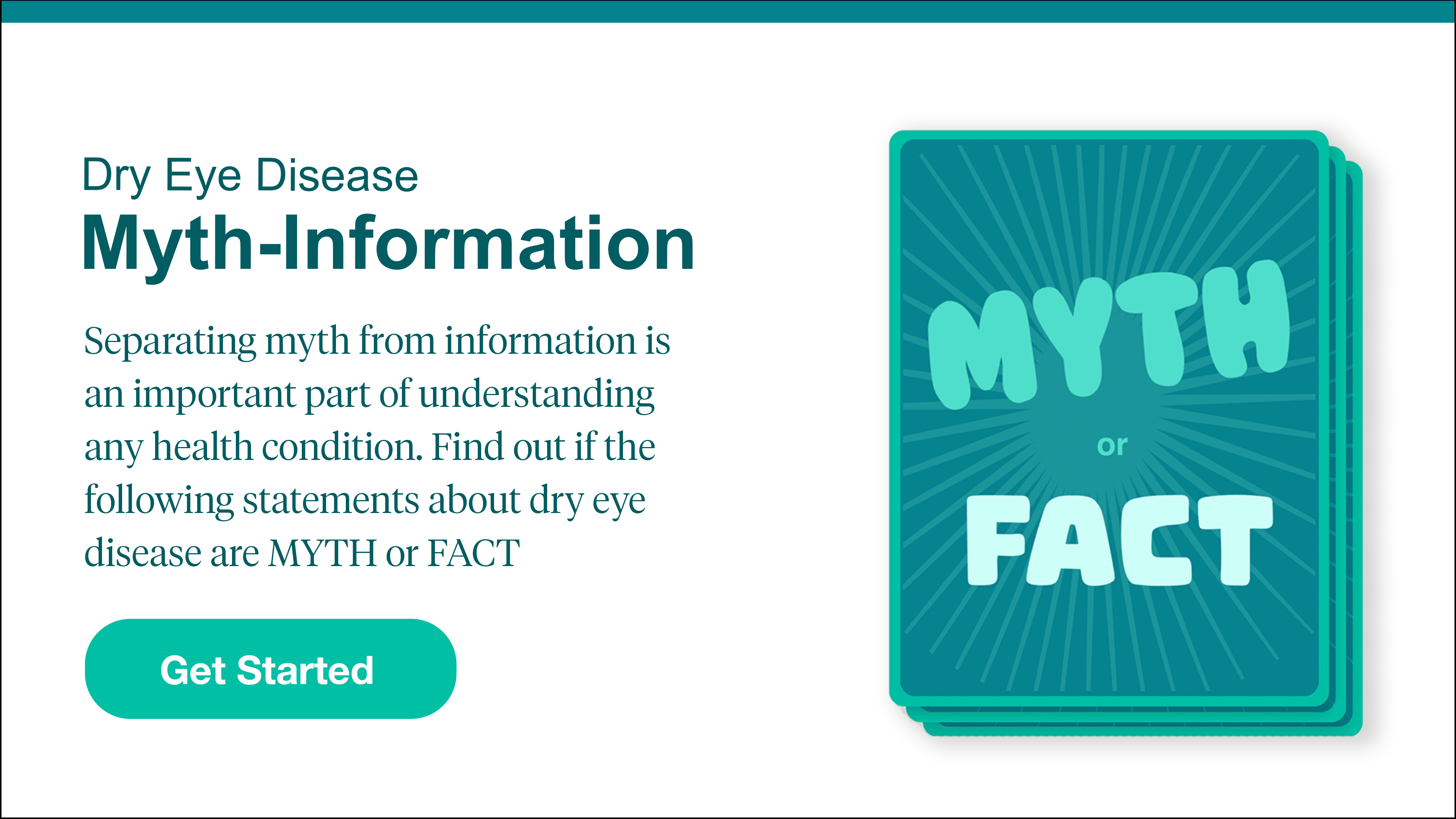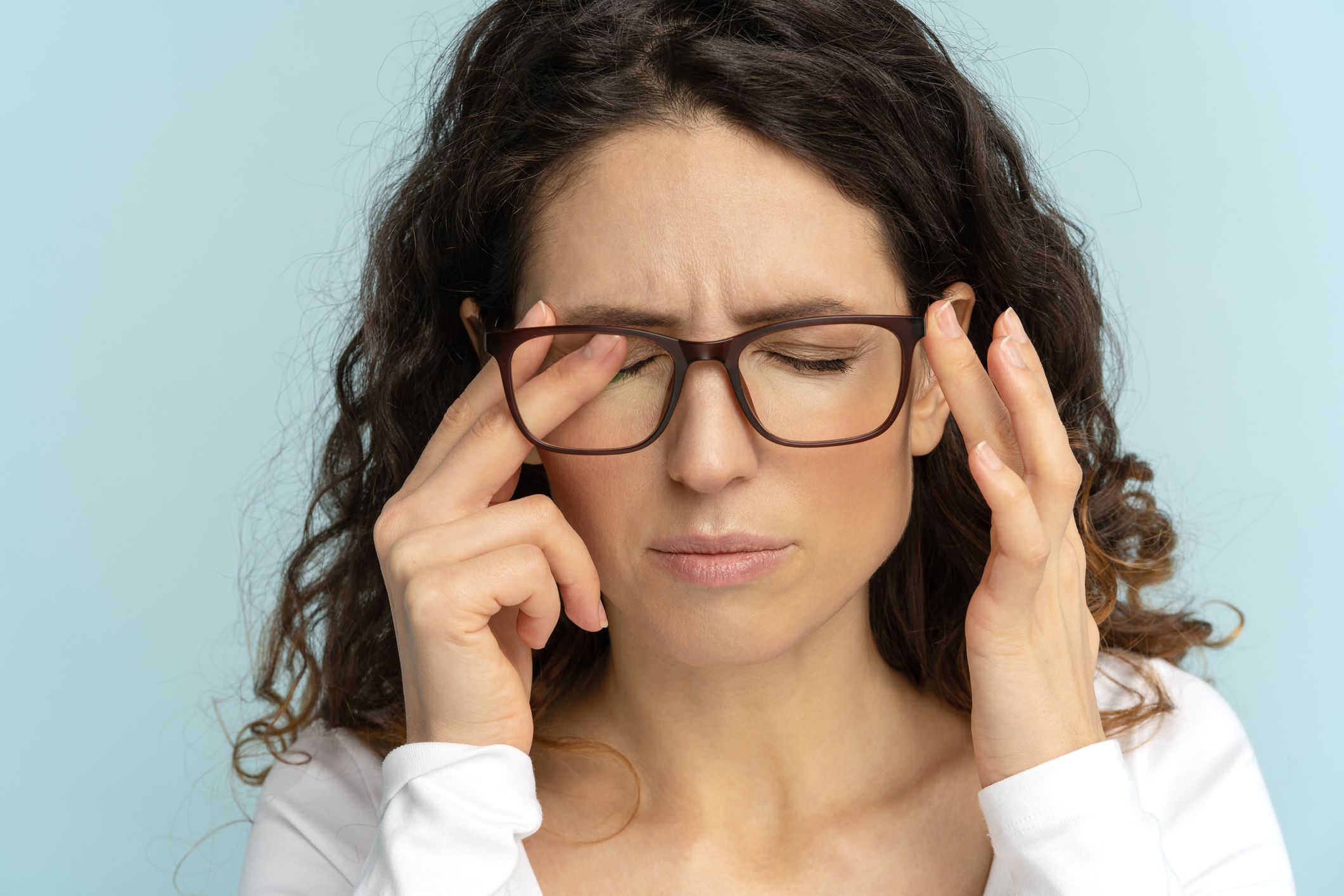Updated on September 29, 2023
Dry eye disease (sometimes called DED) is a condition that occurs when the eyes cannot create enough tears.
Tears are necessary to keep the surface of the eyes smooth and clear and vision working well. When the eyes cannot produce tears—or tears dry up too quickly—the eyes can become dry. This can damage the eyes and cause problems with vision.
Dry eye can happen to anyone, but there are certain factors that put a person more at risk. The condition is more common in people over the age of 50, women, people who wear contact lenses, and after having certain types of laser surgery on the eyes. It is also more prevalent among people who have inflammatory autoimmune conditions, such as lupus, Sjogren syndrome, and rheumatoid arthritis.
Sometimes, dry eye disease can be caused by medications, like antihistamines, blood pressure medications, and antidepressants. Health conditions including diabetes and thyroid disease can also cause dry eyes, as can environmental factors, such as living in a dry climate.
Dry eye disease can impair vision and be a frustrating and painful condition to live with—so it’s important to get treatment.
Treatment for dry eye disease typically involves gels, ointments, or artificial tears in the form of eye drops. Some artificial tears contain preservatives. If you’re allergic to those preservatives or find yourself applying the tears at least six times each day, switch to preservative-free products. More severe cases may require a prescription medication that increases tear production, or even surgery that blocks your tear ducts for good.
Many people with dry eye disease experience dry eye flares—sudden exacerbations of symptoms—and this is another consideration for treatment. Because flares are often caused by environmental triggers, it’s important to try and identify triggers so they can be avoided.
Common dry eye triggers
A trigger is anything that causes symptoms to get worse suddenly. Triggers are common in conditions such as allergies, asthma, and autoimmune diseases. While triggers can vary from person to person, some common triggers for dry eye disease include:
- Weather such as warmer temperatures, dry conditions, and wind
- Pollen and/or other allergens
- Exposure to smoke and other irritants
- Some medications such as antihistamines or diuretics
- Too much screen time or not blinking often enough while looking at a screen
- Wearing contact lenses
- Vitamin A deficiency
Keeping a symptom journal can help you identify potential triggers. You may also want to take proactive steps to avoid flares and keep your eyes healthy, such as wearing wraparound sunglasses when you’re outside, limiting screen time, drinking plenty of water, getting enough sleep, and avoiding smoky areas. You can use a humidifier inside and eat foods rich in omega-3 fatty acids, as well.
Be prepared for flares
Even when you take your medications and do your best to avoid triggers, flares can still occur. It’s important to be prepared. The first step is to talking to your healthcare provider (HCP) about ways to identify triggers, prevent flares, and treat symptoms.






